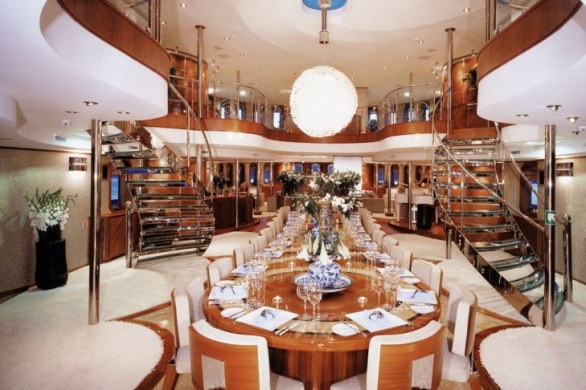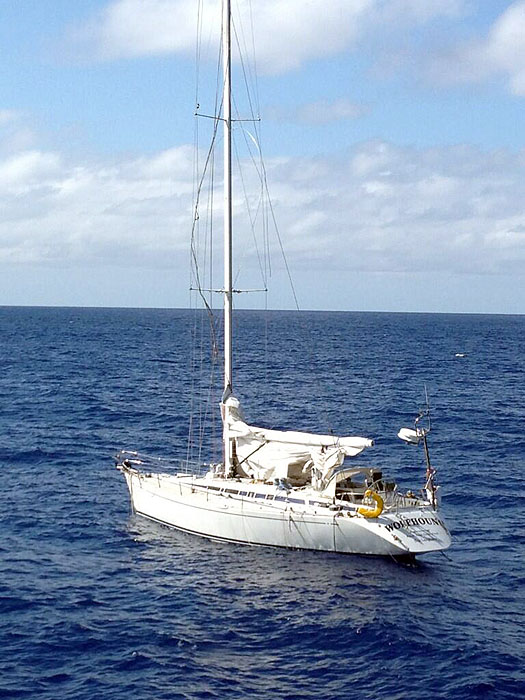 |
| Pool noodles. Is there anything they can't do? |
Bringing along a
Honda 2000 is the road less travelled for the modern cruising couple. Most cruising boats that bother with power generation beyond that provided by alternators, wind and sun opt for
smallish diesel gensets, installed beneath decks, and usually with discrete cooling and exhaust systems. While there is very likely enough room for that in
Alchemy's capacious "engine room", which I can state after spending many an hour down there is more like a steel plated crawlspace, I did not like the idea of a second or third "thing that drinks diesel", if we include a
Wallas or
Espar heater (to name two popular brands) into the mix. One of our cruising goals is to live in a state of electric
frugality from what amps could be wrested from the
wind and the
sunshine.
 |
| Eh, not so much. I rather be Gushing. |
That said, having a Honda 2000, or even two of them (the
Companion model, which is
not a Doctor Who reference), is a way to have 10 or so AC amps for virtually every power tool I would bring, sparing the 2000 watt inverter from a "lossy" conversion from hard-earned DC back to AC. I picture the inverter being on only occasionally, like when we are underway and making alternator amps, in much the same way as I picture we will make water and do other heavy draw activities. If I'm running a Dremel for a hour, however, or charging the anchor windlass battery, or need to drill a few holes ashore, the Honda or a similarly sized "luggable" genset makes perfect sense.
 |
| Not only an example of perfect sense, but a reason to sail to Oswego. |
Using it aboard, however, requires stowage and perhaps a measure of protection from the elements, and its somewhat volatile gasoline fuel. Running portable gensets like the Honda 2000s on deck, particularly a
steel deck, is a recipe for resonance below, and annoyed anchorage-mates above and across, even given the Honda's relatively quiet operation and near-invisible exhaust. I mean, the Hondas are quiet, but only in comparison to a similarly sized go-kart or lawnmower. They aren't silent...but they can be made nearly so.
So a couple of ideas have been percolating: Bring Hondas, but
make 'em quieter and more weatherproof. I got the idea from
this thread on Cruisers' Forum, and while the considerations of not poisoning oneself, or burning down the pilothouse or something else tragic and avoidable. Putting such dreams to one side, let's further consider the advantages or rather the rationale for putting two
boat bucks into Honda's silly little putt-putt plugs.
 |
| My amperage has been thusly embiggened! |
The happy new boat owner thinks: Why, I shall obtain for my fine vessel
a passel of batteries of the finest make, thereby allowing me to charge via Nature's infinite bounty, and therefore I will have the electron-flavoured juice to watch
My Little Pony videos in the inner sanctum of my cruiser's teaky saloon.
 |
| Alchemy's crew quarters are admittedly Spartan. |
So one has a thousand
amp-hours of batteries, for all one's powered needs. How much of that is
actually usable? Keep in mind two factors: What I tend to call the "usable band" of battery power is about 30%:
from 50% state of charge (SOG) to 80%. You need to have
some extra bits
to throw charge into a battery bank after 80% or so, and I would think
it's worth it, if one has, as the
Brony boatie in question, only solar as a charge source aside from the standard alternator on the diesel.
The second factor is b
attery draw-down. It's not always easy on boats to devise
a realistic energy budget that accounts for all the amps being consumed. If you have a fixed draw, like a fridge, an investment in
LED lights, foot pumps for
water, extra
insulation for the fridge and maybe a nice big
alternator
if you need to pump out 12 NM out and want to take the battery bank to
95%-100% or so, this has to be part of the plan going in. In the end run, I believe we will
save on NOT having a genset or burning more
diesel in one, and we will have a quieter life in a
quieter boat.
 |
| Not a robot turkey, merely prudent battery maintenance |
Part of this game plan is being honest: We accept that 750Ah of expensive deep-cycle marine battery capacity means about 225 Ah of
actually usable power, and that wewill be cycling often enough to want to clap on an
equalization
charge (which may be possible with the solar, maybe not) and we will want
hydrocaps and
temperature sensors and
SG readings and other care and
feeding aspects in order to get a good five or six years out of your (hypothetical)
T-105s.
So the question is not just "how much solar" or "how big the alternators" or even "how many Hondas/Panda/Onans" but "how much use and how
much capacity and how much monitoring determine how much solar/wind?"
Such is the way forward on a cruising boat: Work your way backward, doing math.
UPDATE, 14.04.07: If one is interested (and one may be, because of the handiness of using synched
up Hondas as baseline hydro for one's house), here's the technical
explanation for why You Can't Do That in Canada:
http://forums.motorhomemagazine.com/index.cfm/fuseaction/thread/tid/27253477.cfmShort
form is that CSA doesn't allow the type of paralleling circuit in "our"
Honda standalones that the States does, or tends to do, as the
standards vary state-to-state.
The "fix" is to buy two Companions, as far as I can tell. Canadian or American won't (then) make a difference.
The problem is that then you lose the 12 VDC circuit!
So
we're back to one American Companion and one American "straight" Honda
2000...if you think you'd want 12 VDC, and you might on a boat, mightn't
you?!























